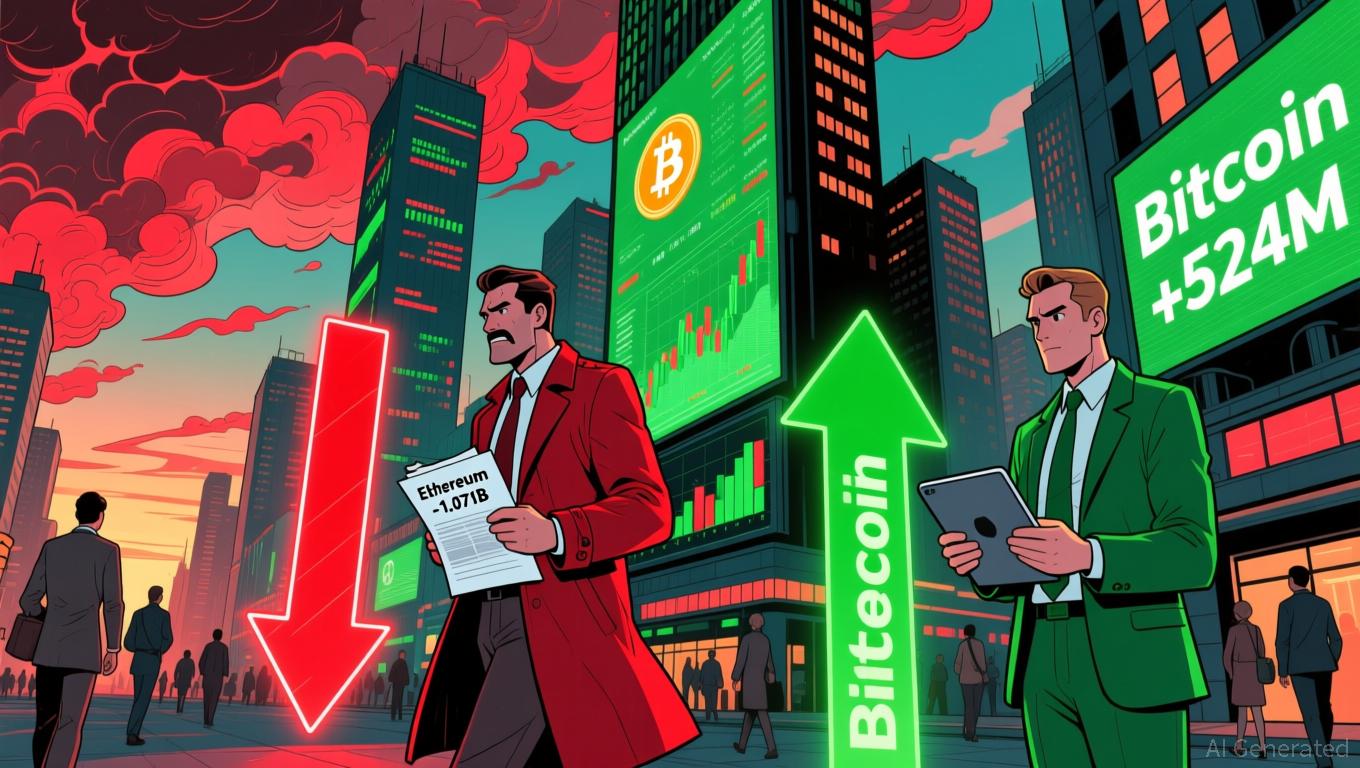Hyperliquid (HYPE) Price Fluctuations: Changing Market Sentiment During DeFi Liquidity Developments
- Hyperliquid (HYPE) faced 2025 liquidity crises from market manipulation and API outages. - November POPCAT spoofing caused $4.5M+ bad debt via leveraged position attacks. - July API outage exposed centralized infrastructure risks during $14.7B open interest. - TVL surged to $2.15B despite whale-driven volatility and anchoring bias effects. - Investors must balance DeFi innovation with systemic risks in fragile liquidity pools.
The decentralized finance (DeFi) industry has consistently faced the challenge of balancing rapid innovation with inherent instability. Hyperliquid (HYPE), a prominent decentralized perpetuals platform, has emerged as a key example for examining how abrupt liquidity disruptions and market manipulation can intensify price swings. Throughout 2025, HYPE's token experienced significant volatility, fueled by a series of notable incidents that revealed weaknesses in both the protocol's structure and market sentiment. This article explores the relationship between liquidity shocks, trader actions, and shifts in sentiment, providing guidance for investors navigating these unpredictable conditions.
The November 2025 POPCAT Incident: Spoofing and Leverage in Action
In November 2025, Hyperliquid encountered its third significant liquidity event of the year when a coordinated attack targeted the Solana-based
This event highlighted a major vulnerability in markets with high leverage and limited liquidity: bad actors can exploit thin order books and community-backed liquidation pools. Unlike typical hacks, this manipulation relied on precise timing and spoofing tactics, illustrating the tension between DeFi's decentralized ideals and its dependence on fragile systems.
The July 2025 API Failure: Infrastructure Weakness and Market Trust
Just a month prior, Hyperliquid faced a different setback. On July 29, 2025,
Although Hyperliquid's technical team quickly restored operations, the incident reignited concerns about the dangers of relying on centralized front-end infrastructure in DeFi.

Market Psychology: TVL, Whale Activity, and Cognitive Biases
Despite these setbacks, Hyperliquid's DeFi Total Value Locked (TVL) climbed to $2.15 billion by late 2025,
Psychological dynamics further intensify market swings. For example, anchoring bias causes whales to concentrate trades at certain price points, while the pursuit of high-risk rewards under leverage leads to bold trading during turbulent times. Analysts need to interpret these patterns carefully, as they can distort underlying market signals and mislead retail traders.
Takeaways for Investors: Managing Risk and Building Resilience
The recent volatility on Hyperliquid provides important insights for DeFi participants. First, liquidity disruptions—whether from manipulation or technical failures—can quickly undermine trust, even in platforms with substantial TVL. Second, volatility driven by large traders highlights the need to track on-chain movements and leverage levels. Lastly, how the platform addresses crises, such as
For HYPE, future success depends on tackling systemic vulnerabilities. Strengthening API reliability, improving detection of spoofing, and expanding liquidity pools could help prevent similar incidents. Still, investors should remain cautious about the DeFi sector's ongoing exposure to manipulation, especially in markets where retail enthusiasm exceeds institutional safeguards.
Disclaimer: The content of this article solely reflects the author's opinion and does not represent the platform in any capacity. This article is not intended to serve as a reference for making investment decisions.
You may also like
Ethereum Updates: Individual Investors Move Funds from Ethereum ETFs to Remittix and XRP as Outflows Continue
- Ethereum ETFs saw $1.071B outflows, contrasting Bitcoin's $524M inflow, as investors shift to alternatives like Remittix (RTX) and XRP . - Retail demand grows for Remittix's cross-border payments and XRP's ETF traction, with Canary Capital's new XRP ETF set to launch. - BlackRock's $19.8M Ethereum ETF sell-off highlights institutional risk reassessment, while XRP stabilizes above $2.38 amid volatility. - Market reallocation favors projects bridging crypto and traditional finance, with Ethereum's DeFi dom

Ethereum News Update: Institutional Hesitancy in Crypto Rises as Founders Fund Reduces ETHZilla Holdings
- Founders Fund cut ETHZilla stake to 5.6%, signaling institutional crypto caution amid market uncertainty. - The move reflects strategic rebalancing, profit-taking, or regulatory adjustments, with lingering Ethereum confidence. - ETHZilla expands into DeFi and tokenization via Liquidity.io partnerships to boost yields. - Insider transactions and whale activity highlight mixed institutional views on Ethereum's future.

Bitcoin News Update: While ETFs See $866M Outflow, Major Bitcoin Holder Acquires $5.5M Worth
- A Bitcoin whale increased holdings by 1760 ETH ($5.53M) amid market pessimism, signaling institutional confidence despite ETF outflows and weak retail demand. - American Bitcoin's BTC staking rose to 4,004 coins (Q3 2025), reflecting strategic accumulation as mining rewards halving approaches and macroeconomic uncertainty persists. - ETFs saw $866M outflows, highlighting fragile institutional interest, while Bitcoin's $95,900 slump and 5.4% market cap drop underscore broader bearish trends. - MicroStrate
Bitcoin Updates: Epstein Correspondence Casts Doubt on Trump’s Claims While Associated Bitcoin Company Sees Increased Earnings
- Newly released Epstein emails reveal Trump's closer ties than publicly acknowledged, including 1990s jet flights and social events. - Trump denies knowledge of Epstein's sex-trafficking operations, calling allegations a "hoax" while his family's Bitcoin firm ABTC reports $3.47M profit. - Congressional documents show Trump maintained connections despite 2000s disputes, with Epstein allegedly listing him in a "little black book" of contacts. - Political battle over Epstein file releases intensifies as crit
